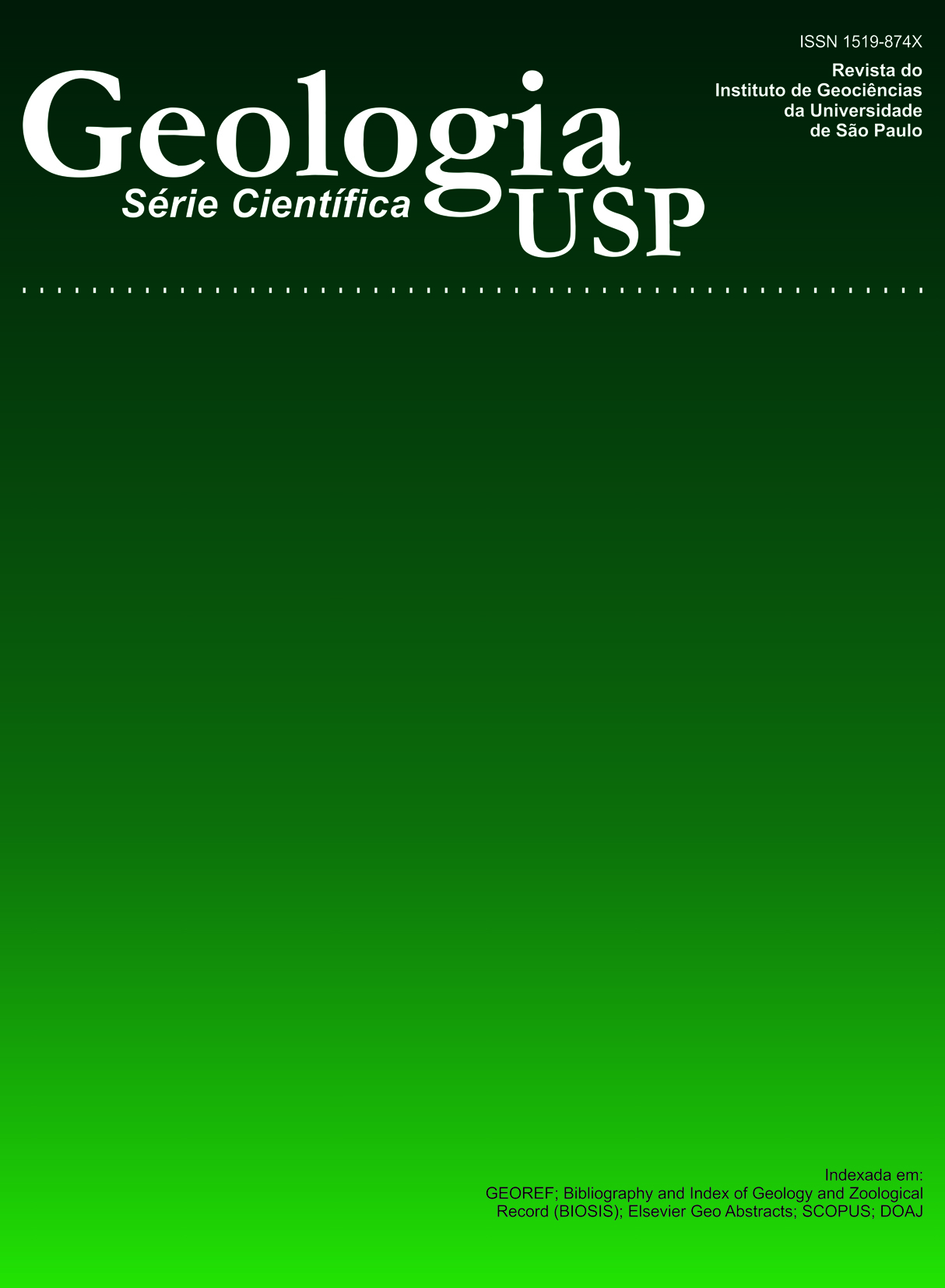A Formação Água Clara na Região de Araçaíba - SP: registro U-Pb de uma bacia mesoproterozóica
DOI:
https://doi.org/10.5327/S1519-874X2004000100007Keywords:
Água Clara Formations, Araçaíba, metabasic rocks, Mesoproterozoic, U-PbAbstract
The main objective of this work is to present U-Pb isotopic data obtained from zircons of metabasic rocks and subordinate acid and associated rocks of the Água Clara Formation in the Araçaíba region - São Paulo. The Água Clara Formation is predominantly constituted by a sequence of carbonate rocks (pure to impure marbles), calc-silicate rocks, calc schists, mica schists, amphibole schists, quartzites, garnet-chlorite-biotite schists, metacherts, basic and intermediate metatuffs, metabasites, amphibolites and cornubianites. The metabasic bodies are usually a few km long with widths of hundreds of m. They are greenish gray, fine- to medium-grained, and usually present nematoblastic texture. More isotropic terms also occur, showing granoblastic texture. They are composed of pyroxenes (diopside or augite), amphiboles (actinolite and hornblende), and plagioclases (andesine/oligoclase). The most common accessories are apatite, magnetite, epidote, titanite, and rare zircon. In thin section, preserved ophitic and subophitic textures are observed, indicating a probable igneous origin. The geochemical data suggest compositions similar to enriched midoceanic ridge basalts (E-MORB) tending to oceanic island basalts (OIB). The subalkaline, tholeiitic characteristics, similar to E-MOR basalts tending to OI basalts, suggest distension or back-arc environments as the geotectonic settings for the basic magmatism. The geochronologic and geochemical characteristics and structural patterns described for the Água Clara Formation metabasic lithotypes (probably sills and/or dikes) suggest that periodic volcanism with associated sedimentation occurred during the Mesoproterozoic at about 1500 Ma. This event represents an important marker in the volcano-sedimentary evolution of the Apiaí Domain. The Neoproterozoic values obtained refer to zircon recrystallization, to neoformation processes which affected the metabasics and amphibolites, to the emplacement of granitic and acid volcanic rocks, and to regional cooling of the Água Clara Formation.Downloads
Download data is not yet available.
Downloads
Published
2004-04-01
Issue
Section
Articles
License
Authors who publish in this journal shall comply with the following terms:
- Authors keep their copyright and grant to Geologia USP: Série Científica the right of first publication, with the paper under the Creative Commons BY-NC-SA license (summary of the license: https://creativecommons.org/licenses/by-nc-sa/4.0 | full text of the license: https://creativecommons.org/licenses/by-nc-sa/4.0/legalcode) that allows the non-commercial sharing of the paper and granting the proper copyrights of the first publication in this journal.
- Authors are authorized to take additional contracts separately, for non-exclusive distribution of the version of the paper published in this journal (publish in institutional repository or as a book chapter), granting the proper copyrights of first publication in this journal.
- Authors are allowed and encouraged to publish and distribute their paper online (in institutional repositories or their personal page) at any point before or during the editorial process, since this can generate productive changes as well as increase the impact and citation of the published paper (See The effect of Open Access and downloads on citation impact).
How to Cite
Weber, W., Siga Júnior, O., Sato, K., Reis Neto, J. M. dos, Basei, M. A. S., & Nutman, A. P. (2004). A Formação Água Clara na Região de Araçaíba - SP: registro U-Pb de uma bacia mesoproterozóica . Geologia USP. Série Científica, 4(1), 101-110. https://doi.org/10.5327/S1519-874X2004000100007





